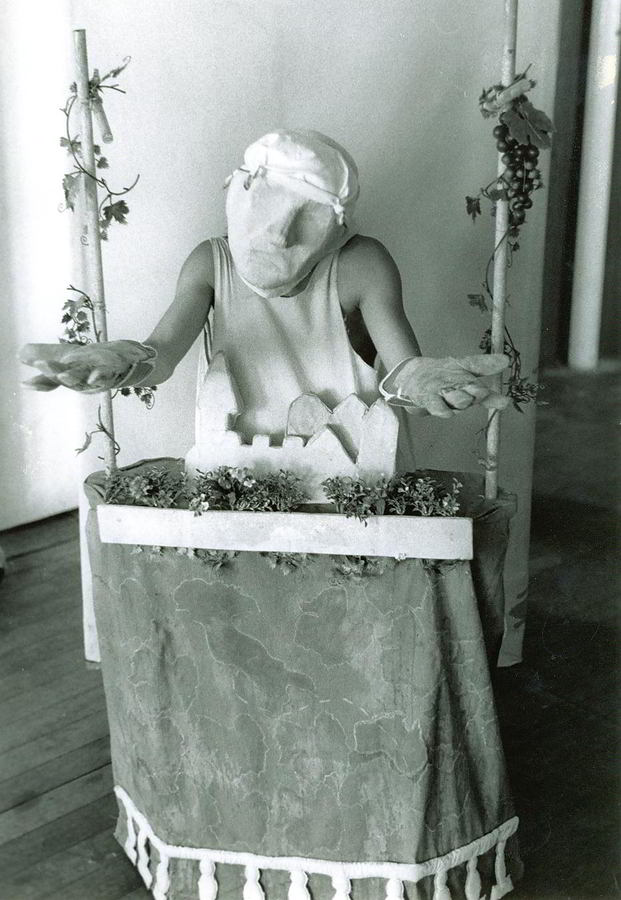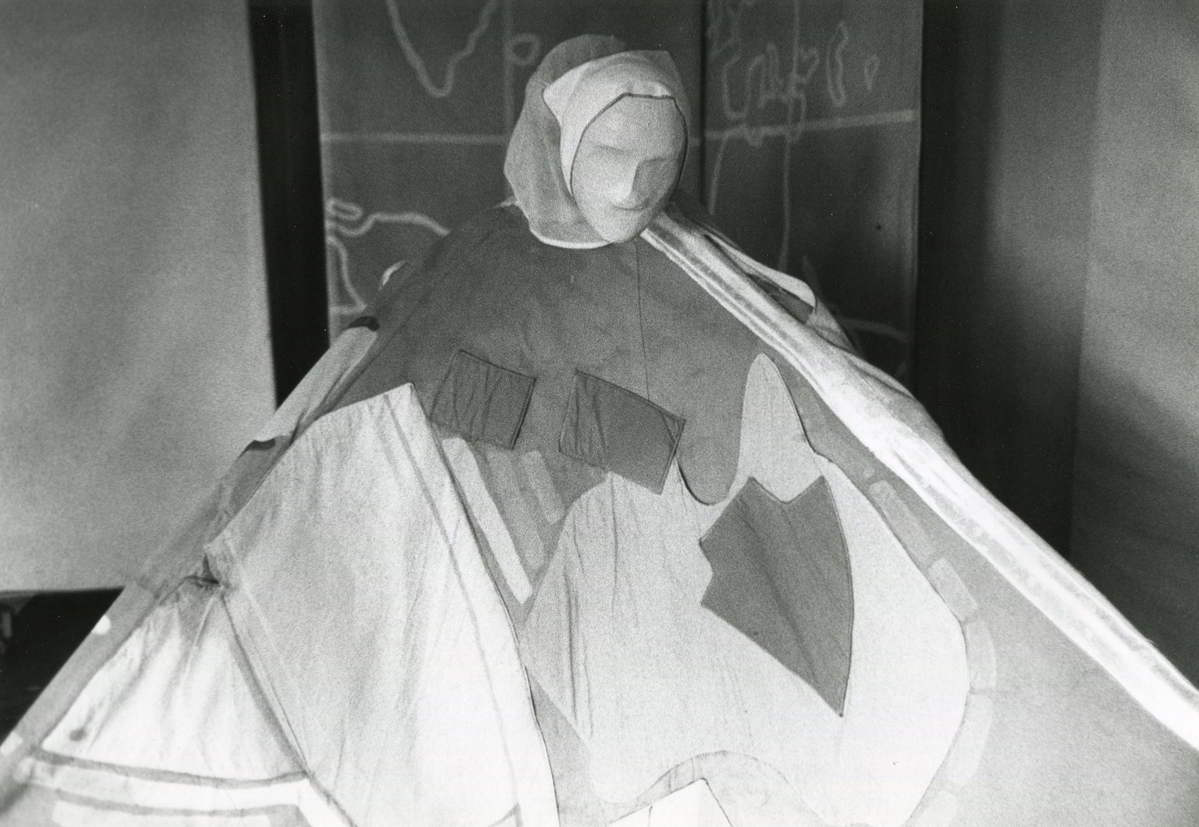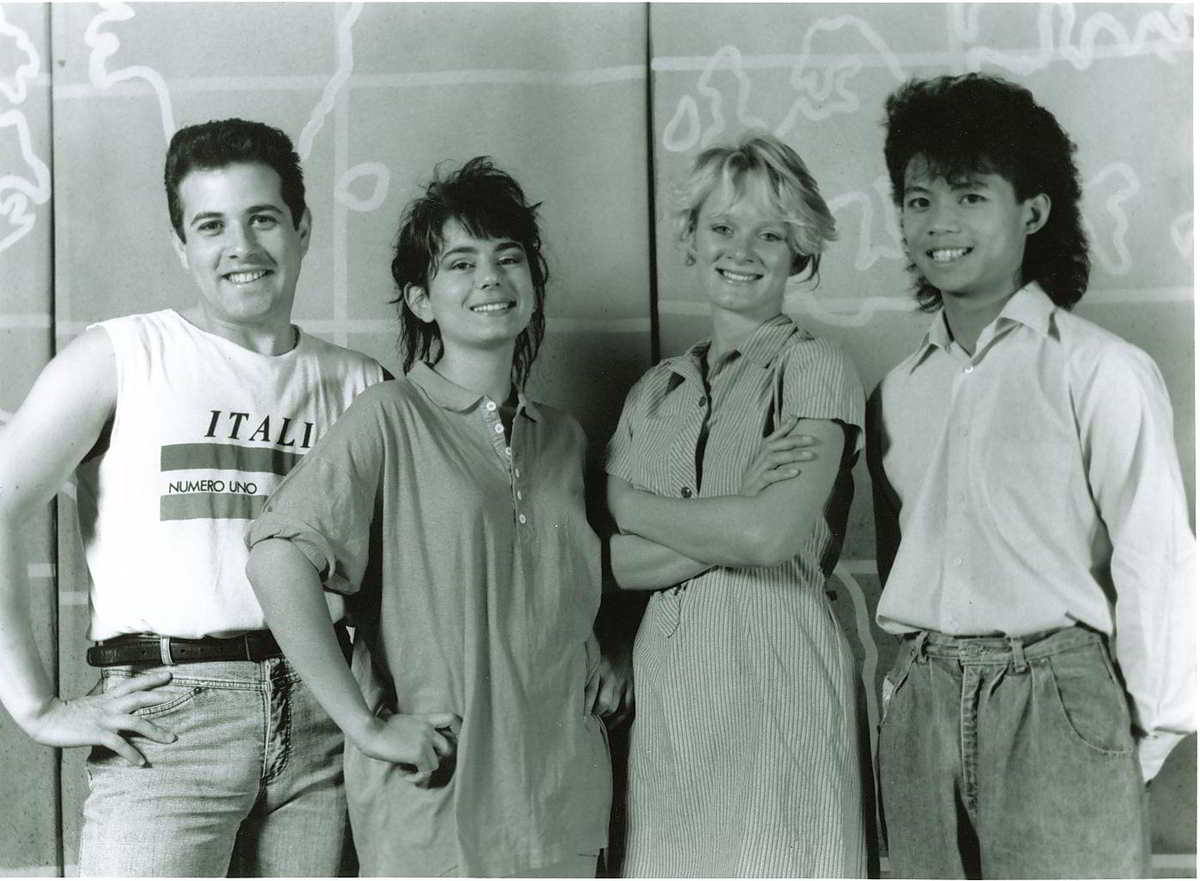| Premiere | 7 March, 1986 |
| Venue | Secondary schools |
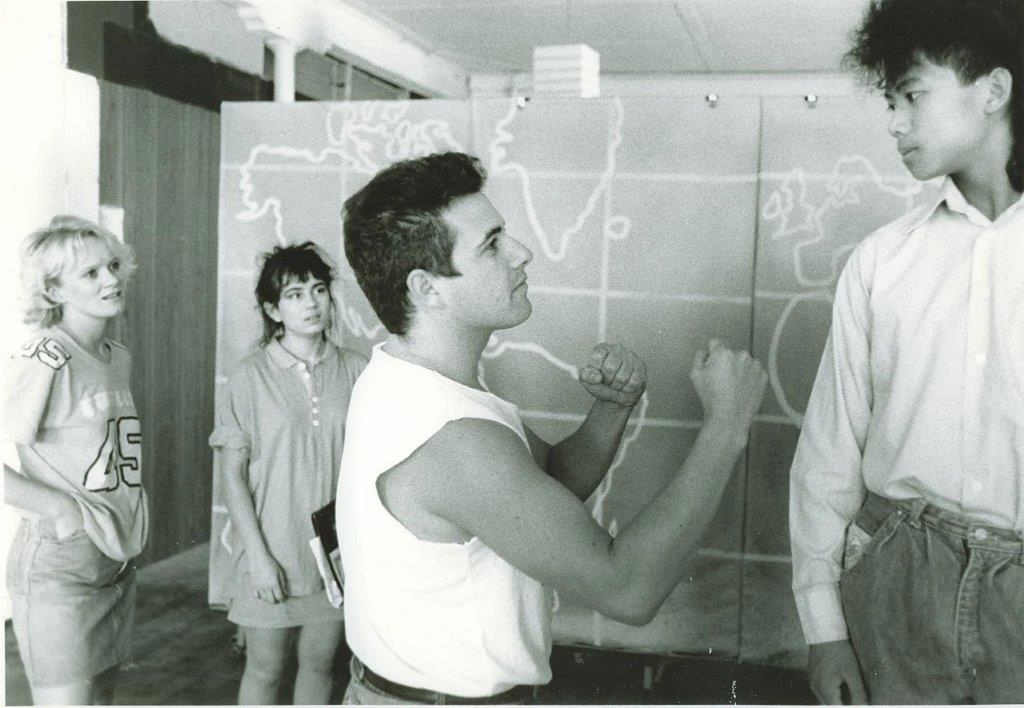
From left, Sally Minter as Linda, Mary Coustas as Angela, Roberto Micale as Angelo and Tony Le as Hoan
Multicultural Arts Victoria Vol 2, No 2
A CHANGE OF FACE was created by Handspan Theatre at the instigation of Carmelina Di Guglielmo, inspired by her own experience of growing up in Melbourne in a migrant family in the 1960s and 70s.
The play was based on issues experienced by a new generation of adolescents in multicultural Australia, researched in 19851 by Carmelina and playwright Andrea Lemon.
Carmelina’s experience in touring to Italy with Secrets in 1983 had given her a new perspective on her own cultural roots. The means for her to express it was the outcome of both her Rusden College training and her previous collaboration with Handspan to create Prime Time (1980).
Andrea joined Handspan for The Haunted (1985), a production based on first-hand research in which she was a key contributor. The experience fired her ambition to apply similar precepts to her playwriting on other themes of social justice. A CHANGE OF FACE was her first professional play based on in-depth research, and many others have followed, including Banquet for Handspan in 1989.
Carmelina and Andrea visited Melbourne metropolitan high schools and inner-city English language centres catering for new immigrants, to observe student behaviour and attitudes and to discuss multi-cultural issues and cross-cultural communication with students. With other Handspan artists, Lizz Talbot and Avril McQueen, they extended the experience through puppetry and drama workshops in schools, exchanging skills and information around the topic and recording oral histories.
Before the work began, they had expected to find that tensions which had been evident for children of Australia’s post-war migrant influx of the 1950s and 60s would have dissipated by the enlightened 1980s. They were shocked in their research to find that little had changed since Carmelina’s schooldays when ‘wogs’ and ‘dagos’ were bullied and ostracised.
They discovered that despite a 1980’s jargon and a ‘’change of face’’ from European to Asian, racism in all its vicious guises is still evident in our schools today
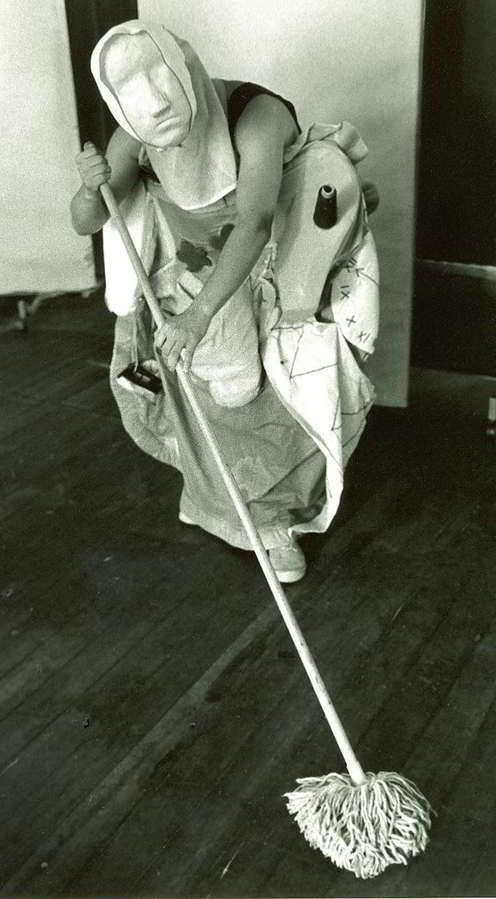
The Play
A CHANGE OF FACE followed the story of Linda (the ‘Skip’) who, after moving into inner city Melbourne with her mother after a family break-up, changes schools and encounters classmates from diverse cultural backgrounds. In this milieu, Linda is the odd one out, but not as odd as her friend Hoan, a recently arrived migrant from Vietnam.
The play moved between the school yard and home life for its protagonists: Linda, from several generations of British-Australian stock; Angelo, a second generation Italo-Australian and Angela, a second-generation Greek-Australian, both with families whose home life was firmly entrenched in pre-war European cultural traditions; and Hoan, recently escaped from war-torn Vietnam, and an orphan. The play dramatised the students’ conflicts and the differences in their backgrounds. The trauma of teenage racism and cross generational tension in their world was sharply drawn.
Actors, all from culturally specific backgrounds, played the teenage students. Puppets retold the stories of their parents and illustrated their various ethnic circumstances, perspectives and experience. Reviewer, Anna Epstein from Multicultural Arts Victoria recognised the play’s basis in reality:
These adolescents are living out the prejudices of their elders. In this, and the portrayal of ordinary teenage preoccupations, the play strikes some uncannily accurate notes… Powerfully suggestive puppets took the role of what were really, national stereotypes: the parents with their sufferings ‘dead on the inside’ and a brutally racist Australian shopkeeper
Design for A CHANGE OF FACE was simple and tourable. Puppet characters were worn as costumes and operated by an innovative manipulation technique that, with the puppet head secured in front of the actor’s own masked face, animated their different stories of migration and integration into Australian society. Moveable screens slid and revolved from scene to scene as the play portrayed arguments at home and brutal bullying and racist name calling in the classroom. Desperation finally provoked near violence, averted, in the schoolyard. Friendships were established as individual similarities became obvious, and tentative overtures towards mutual understanding were broached.
The play looks at relations between different ethnic groups and through a human drama, has a positive light at the end of the tunnel
Student audiences were moved and engaged by a work which mirrored their own situations and unmasked well-recognised behaviours.
I recently had the pleasure of seeing your production, 'A Change of Face', at the National Gallery. Over the last 4-5 years I have worked with students and young unemployed people and I don't believe I have ever seen a group of people capture the attention of that particular audience so powerfully and so consistently throughout a performance. ( Not even the most popular videos come close). I wanted to congratulate you on the ability to address such a difficult area with such sensitivity and perceptiveness.
I found the platy extremely moving. It seems that too often, 'educators' (I include myself) steer clear of racism amongst younger, and older, people, and throw it in the too hard basket to be dealt with by someone else. The performance has pricked my conscience to continue to make attempts to address issues related to racism amongst both students and educators, Thanks for the play.
The creators of 'A Change of Face' have produced a thought-provoking look at the problems of racism in schools in the 1980s. Handspan must be congratulated for their understanding of the capacity for thoughtful reflection that so many young people are capable of.
The play was a bold and exciting production for high school audiences and an affirmative step for young multi-cultural artists emerging in Australia at the time. Roberto Micale and Mary Coustas, in the play Angelo and Angela respectively, created its sequel Who Are You? in 1987 with Handspan. In the same year, Wogs Out of Work,2 which explored similar issues through comedy, involved some of these artists and led to a decade of stage and television success and theatrical representation of multicultural community realities in Australia.
A CHANGE OF FACE played over 100 performances in 1986 in Melbourne metropolitan high schools, appeared at the 1987 World ASSITEJ Conference3 in Adelaide, and toured for the Victorian and South Australian Arts Councils to regional areas in those states.
For Handspan, it was again a new work that grew from the vision of company artists to make sense of their own environment and circumstances and to portray their concerns and sensibilities in accessible and dynamic theatre for social change.
Footnotes
| Creative team | |
|---|---|
| Writer | Andrea Lemon |
| Director & Producer | Carmelina Di Guglielmo |
| Designer | Ken Evans |
| Puppetry director | Frank Italiano (1987) |
| Research collaborators | Andrea Lemon, Avril McQueen, Carmelina Di Guglielmo, Lizz Talbot |
| Performers | |
|---|---|
| Linda & Hoan’s mother | Sally Minter (1986); Harriet Spalding (1987) |
| Hoan & Angelo’s father | Tony Le |
| Angela & Linda’s mother | Mary Coustas |
| Angelo & Angela’s mother | Roberto Micale |
| Seasons | |
|---|---|
| 1986 | |
| 7 March – August | Melbourne metropolitan secondary schools |
| 1987 | |
| January - April | Victorian Arts Council Schools Program |
| May | International ASSITEJ Conference, Come Out Festival, Adelaide South Australia |
| June | South Australian Arts Council |
| Total Performances | 205 |
| Total Audience | 20,881 |
